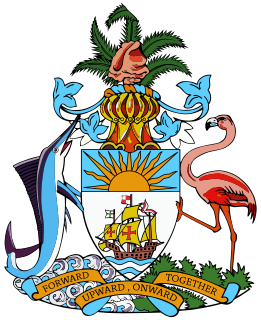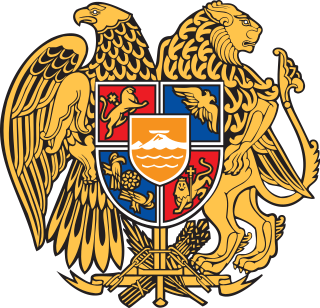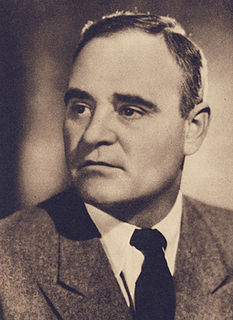 |
|---|
| This article is part of a series on the politics and government of Myanmar |
|
|
A constitutional referendum was held in Burma on 15 December 1973. [1] The new constitution was approved by 94.5% of voters, with voter turnout reported to be 95.5%. [2]
 |
|---|
| This article is part of a series on the politics and government of Myanmar |
|
|
A constitutional referendum was held in Burma on 15 December 1973. [1] The new constitution was approved by 94.5% of voters, with voter turnout reported to be 95.5%. [2]
| Choice | Votes | % |
|---|---|---|
| For | 13,312,801 | 94.45 |
| Against | 781,559 | 5.55 |
| Invalid/blank votes | – | |
| Total | 14,094,360 | 100 |
| Registered voters/turnout | 14,760,036 | 95.49 |
| Source: Direct Democracy | ||

Elections in the Bahamas take place in the framework of a parliamentary democracy. Since independence voter turnout has been generally high in national elections, with a low of 87.9% in 1987 and a high of 98.5% in 1997. The current Prime Minister is the Hon Hubert Minnis.

Folketing elections were held in Denmark on 16 November 1932, except in the Faroe Islands where they were held on 12 December. The Social Democratic Party remained the largest in the Folketing, with 62 of the 149 seats. Voter turnout was 81.5% in Denmark proper and 59.2% in the Faroes.

A referendum on self-determination for Algeria was held in France on 8 January 1961. Self-determination was approved by 75.0% of voters overall and 69.5% in Algeria. The government reported voter turnout of 92.2%. Other sources claim that two-fifths of those entitled to vote abstained.

General elections were held in Puerto Rico on 5 November 1996. Pedro Rosselló of the New Progressive Party (PNP) was re-elected Governor, whilst the PNP also won a majority of seats in the House of Representatives and the Senate. Voter turnout was between 80% and 82%.

A constitutional referendum was held in Poland on 25 May 1997. Voters were asked whether they approved of a new constitution. It was narrowly approved, with 53.5% voting in favour. Voter turnout was just 42.9%. Although the 1995 Referendum Act stated that a 50% turnout was required to validate the referendum, the Supreme Court ruled on 15 July that the constitution could be introduced.

An independence referendum was held in the Republic of Armenia on 21 September 1991, and was to determine if voters were in favour of independence from the Soviet Union. A total of 99.5% of voters voted in favour. Turnout was 95.0%.
A referendum on the status of the island was held in Puerto Rico on 14 November 1993. Voters were given the choice between being a Commonwealth, statehood or independence. A plurality of voters voted for Commonwealth status, with a voter turnout of 73.5%.

A referendum on the use of nuclear power was held in Austria on 5 November 1978. Voters were asked whether they approve a law allowing the peaceful use of nuclear power, particularly relating to the start-up of the Zwentendorf Nuclear Power Plant. Voters narrowly rejected it, with 50.5% voting against. As a result, although the Power Plant was finished, it was never operated and has since been dismantled.

General elections were held in Italy on 29 October 1882, with a second round of voting on 5 November. The "ministerial" left-wing bloc emerged as the largest in Parliament, winning 289 of the 508 seats.

An independence referendum was held in the Lithuania on 9 February 1991. It was approved by 93.2% of voters. The number of voters voting "yes" was 76.5% of all registered voters, far exceeding the threshold of 50%. Independence had been declared on 11 March 1990, and was achieved in August 1991.
Parliamentary elections were held in Norway in 1829. As political parties were not officially established until 1884, all those elected were independents. The number of seats in the Storting was increased from 79 to 81. Voter turnout was 45.3%, although only 5.5% of the country's population was eligible to vote.
Parliamentary elections were held in Norway in 1841. As political parties were not officially established until 1884, all those elected were independents. The number of seats in the Storting was increased from 99 to 100. Voter turnout was 50.9%, although only 5.5% of the country's population was eligible to vote.

Parliamentary elections were held in Romania on 5 March 1961. Voters were presented with a single list from the People's Democratic Front, which was dominated by the Romanian Workers Party. The Front won all 465 seats in the Great National Assembly.
Two referendums were held in Switzerland in 1879. A federal law on subsidies for railways in the Alps was passed by 70.7% of voters on 19 January, whilst a referendum on the death penalty on 18 May was passed by 52.5% of voters and a majority of cantons.
Five referendums were held in Switzerland in 1891. The first was held on 15 March on a federal law on federal officials who had become unemployable due to disability, and was rejected by 79.4% of voters. The second was held on 5 July on a constitutional amendment, and was approved by 60.3% of voters. Two referendums were held on 18 October, one on revising article 39 of the federal constitution and one on a federal law on Swiss tariffs; both were approved. The last was held on 6 December on the question of whether the federal government should purchase the Swiss central railway, but was rejected by 68.9% of voters.
A referendum on the electoral system was held in Switzerland on 23 October 1910. Voters were asked whether they approved of introducing proportional representation for National Council elections. Although the proposal was approved by a majority of cantons, it was rejected by 52.5% of voters. This was the second such referendum, after the one in 1900 also failed. However, a third referendum on the same issue was held in 1918, and passed with 66.8% in favour.
A referendum on grain supply was held in Switzerland on 5 December 1926. Voters were asked whether they approved of adding article 23 bis to the constitution, which concerned grain supply. The proposal was rejected by a majority of voters and cantons.
Four referendums were held in Switzerland during 1935. The first was held on 24 February on a federal law reorganising the military, and was approved by voters. The second was held on 5 May on a federal law on the transport of goods and animals on roads, and was rejected by two-thirds of voters. The third was held on 2 June on a popular initiative "to combat the economic crisis" and was also rejected by voters. The fourth was held on 8 September on a popular initiative "for a total revision of the federal constitution", and was rejected by 72% of voters.
Five referendums were held in Switzerland in 1970. The first was held on 1 February on a federal resolution on the domestic sugar market, and was approved by voters. The second was held on 7 June on a popular initiative "against foreign infiltration", and was rejected by voters. The third and fourth were held on 27 September on an amendment to the Swiss Federal Constitution regarding promoting gymnastics and sports, which was approved, and a popular initiative on the "right to habitation and expansion of family protection", which was rejected. The fifth was held on 15 November on an amendment to the federal financial order, and was approved by voters.
Four referendums were held in Switzerland in 1981. The first was held on 5 April on a popular initiative "for a new policy on foreigners." Known as the "Mitenand Initiative", it was rejected by 84% of voters. The next two referendums were held on 14 June on popular initiatives for gender equality and the protection of consumer rights, both of which were approved. The final referendum was held on 29 November on prolonging the federal finance order, and was also approved.
| This article about government and politics in Myanmar is a stub. You can help Wikipedia by expanding it. |